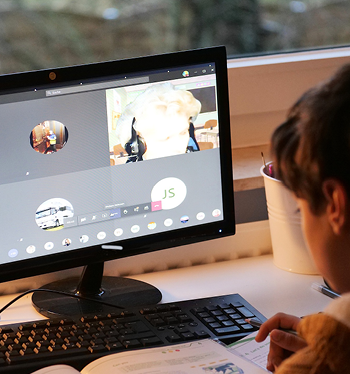 Since our 2015 collection of resources on Games & Simulations, projects in the DRK-12 portfolio have continued to explore and advance our understanding of how simulations can transform and improve STEM teaching, learning, and assessment. This month’s Spotlight highlights seven current or recent projects that are leveraging simulations to enhance student and teacher learning, and in her blog, Jamie Mikeska discusses simulations in teacher education and opportunities for researchers to advance this field.
Since our 2015 collection of resources on Games & Simulations, projects in the DRK-12 portfolio have continued to explore and advance our understanding of how simulations can transform and improve STEM teaching, learning, and assessment. This month’s Spotlight highlights seven current or recent projects that are leveraging simulations to enhance student and teacher learning, and in her blog, Jamie Mikeska discusses simulations in teacher education and opportunities for researchers to advance this field.- Using Simulations to Support STEM Teacher Learning: Exploring Possibilities, Challenges, and Future Directions | Blog by Jamie Mikeska
- Featured Projects
- CAREER: Bridging the Digital Accessibility Gap in STEM Using Multisensory Haptic Platforms (PI: Jenna Gorlewicz)
- Developing Preservice Elementary Teachers' Ability to Facilitate Goal-Oriented Discussions in Science and Mathematics via the Use of Simulated Classroom Interactions (PI: Jamie Mikeska)
- Enhancing Science Education Through Virtual Reality: A Conference to Design Simulations That Enhance the Clinical Preparation of Secondary Science Teachers (PI: Jaqueline Rodriguez)
- RAPID: Learning to Teach During COVID-19: Leveraging Simulated Classrooms as Practice-Based Spaces for Preservice Elementary Teachers Within Online Teacher Education Courses (PI: Jamie Mikeska)
- Leveraging Simulations in Preservice Preparation to Improve Mathematics Teaching for Students with Disabilities (PIs: Julie Cohen, Nathan Jones)
- Mathematical Learning via Architectural Design and Modeling Using E-Rebuild (PI: Russell Almond)
- Online Practice Suite: Practice Spaces, Simulations and Virtual Reality Environments for Preservice Teachers to Learn to Facilitate Argumentation Discussions in Math and Science (PI: Jamie Mikeska)
- Additional Projects
- Related Resources
Blog: Using Simulations to Support STEM Teacher Learning: Exploring Possibilities, Challenges, and Future Directions
Jamie Mikeska, Senior Research Scientist, Educational Testing Service
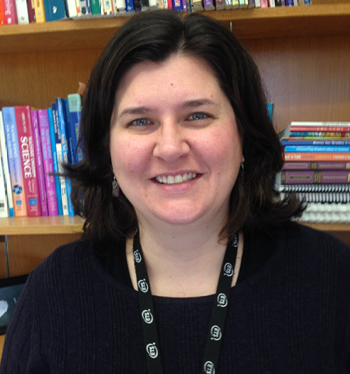
Ensuring that all students have substantive opportunities to engage in equitable sensemaking within STEM classrooms is critically important. But for teachers to learn how to create and maintain this kind of classroom culture, they need opportunities to engage in repeated practice where they can refine their instructional decision-making and capabilities. Simulations are one promising tool that are increasingly being used within teacher education settings to support STEM teacher learning.
Outcomes from a recent national conference, which was funded by the National Science Foundation (grant #1813476) and focused on examining the role of simulations in mathematics and science teacher education, resulted in a published manuscript that included the following working definition of simulations for use in STEM teacher education contexts...Read more.
Featured Projects
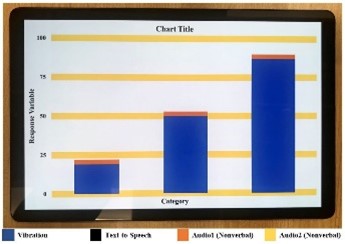
CAREER: Bridging the Digital Accessibility Gap in STEM Using Multisensory Haptic Platforms
PI: Jenna Gorlewicz
STEM Disciplines: Mathematics, science (both graphics and interactive simulations)
Grade(s): The content we target in our research has primarily focused on middle school grade levels, but we seek feedback from individuals in middle school up through adulthood.
Target Audience: Students with visual impairments
Description: With educational content rapidly moving to electronic form, the accessibility gap in STEM is growing - content is and continues to be presented visually. Imagine learning math or science, we typically think of graphs and charts as a part of this learning process. This heavy visual emphasis leaves STEM fields inaccessible to the 6 million U.S. K-12 students with disabilities and more specifically, the 678,000 students with blindness or visual impairments (BVI). In this project, we investigate touch-based systems that are readily available for rendering visual STEM content through sight, sound, and touch. We determine how to use combinations of visual display, text-to-speech, vibrations, and the movement of one’s hands for interacting with STEM content multimodally. We have developed multimodal math graphics (e.g. bar charts that you can hear and feel on touchscreens). We have also collaborated with the PhET team, toward enhancing the accessibility of STEM simulations via vibrations and tangible manipulatives. We have developed a 3D printed quadrilateral that you can transform into different geometries in conjunction with a simulation, opening up investigations into 2D to 3D mappings. The findings from this work place digital accessibility and inclusion at the forefront of next-generation learning technologies in STEM education.
Initial Findings: We have been able to establish different touch (vibration) paradigms that are currently being incorporated into a small number of PhET sims toward understanding where tactile feedback can complement and extend the current visual and auditory feedback of the simulations. Building off of our prior work (Award 1644538) where we have established guidelines for rendering basic graphics multimodally, we are also beginning to understand how to incorporate “drill-down” techniques into more complex graphics to garner more information. Additionally, we have extended our investigations into tangible manipulatives, adding another dimension of touch interaction to simulations. In this context, we have developed a 3D printed quadrilateral, which can be manipulated (adjusting side lengths and angles) and transformed into other geometries and pair with a PhET simulation on quadrilaterals. Early studies demonstrate the affordances of adding this kinesthetic dimension and being able to move from the physical to the electronic space.
Product(s):
- Lambert, S. G., Fiedler, B. L., Hershenow, C. S., Abrahamson, D., & Gorlewicz, J. L. (2022). A Tangible Manipulative for Inclusive Quadrilateral Learning. The Journal on Technology and Persons with Disabilities, 10, 66–81. BEST PAPER AWARD at the CSUN 2022 Conference.
- J. L. Gorlewicz, J. L. Tennison, P. M. Uesbeck, M. E. Richard, H. P. Palani, A. Stefik, D. W. Smith, & N. A. Giudice (2020). Design Guidelines and Recommendations for Multimodal, Touchscreen-based Graphics. ACM Transactions on Accessible Computing (TACCESS), 13(3), 1-30.
- J. L. Tennison, P. M. Uesbeck, N. A. Giudice, A. Stefik, D. W. Smith, & J. L. Gorlewicz (2020). Establishing Vibration-based Tactile Line Profiles for Use in Multimodal Graphics. ACM Transactions on Applied Perception (TAP), 17(2), 1-14.
- J. Tennison and J. L. Gorlewicz (2019). Non-visual perception of lines on a multimodal touchscreen tablet. ACM Transactions on Applied Perception, 16(1), 6.
- M. Hahn, C. Mueller, & J. L. Gorlewicz (2019). The comprehension of stem graphics via a multi-sensory tablet in students with visual impairment. Journal of Visual Impairment and Blindness, 113(5), 404-418.
- Tennison J., Greenberg J., E. Moore, and Gorlewicz, J. L. (2021) Haptic paradigms for multimodal interactive simulations. Journal on Technology and Persons with Disabilities. CSUN Assistive Technology Conference, March 2021.
- J. Pasquesi & J. L. Gorlewicz(2021). Investigating Multi-Touch Vibrations on Mobile Touchscreens. IEEE World Haptics Conference.
Developing Preservice Elementary Teachers' Ability to Facilitate Goal-Oriented Discussions in Science and Mathematics via the Use of Simulated Classroom Interactions
PI: Jamie Mikeska | Co-PI: Heather Howell
STEM Disciplines: Mathematics (fractions) and science (matter and its interactions)
Grade(s): 3-5
Target Audience: Preservice elementary teachers and mathematics and science elementary teacher educators
Description: Teachers’ learning is supported by opportunities to try out novel teaching practices in a safe space where they can learn over time. Our project used an innovative tool – a simulated classroom made up of five upper elementary student avatars – and performance tasks to provide a practice-based space for preservice elementary teachers to learn how to engage in one ambitious teaching practice in science and mathematics: facilitating argumentation-focused discussions. We collected data at multiple sites as elementary teacher educators led preservice teachers enrolled in their methods classes through three successive cycles of activities using the simulated classroom and performance tasks. Each cycle of activities included: (1) opportunities for each preservice teacher to prepare for and then lead a 20-minute discussion in elementary science or mathematics within the simulated classroom, (2) the provision of individual feedback to each preservice teacher based on their discussion performance, and (3) an in-class debrief in the methods class. Findings showed that these cycles of activities supported the preservice teachers in improving their ability to facilitate argumentation-focused discussions and their understanding about discussion and argumentation. These experiences also supported teacher educators in developing their thinking about how to better support the preservice teachers they work with.
Methodology: As an early design and development project, the project’s work was divided into two broad phases. The first was the initial design phase, which included the following: (a) the conceptualization, design, development, and piloting of four performance tasks in each content area (mathematics and science) and (b) the development of a simulated classroom environment, student avatars, and simulation specialist training materials to support task implementation. Goals associated with this phase of the project included developing the technology platform and collecting preliminary data around task performance, adequacy of simulation specialist training materials, scoring reliability, and sensitivity of the scoring rubric. The second phase was the implementation phase where teacher educators utilized the performance tasks in elementary mathematics and science methods courses, first under control conditions and then under intervention conditions. Data collected during this second phase allowed us to examine patterns in performance within and across groups, develop use cases to describe how preservice elementary teachers and teacher educators think about and make use of the tasks, conduct validity and reliability analyses relevant to formative use of such tools, and understand how preservice elementary teachers make sense of and learn from their scores, feedback, and the support provided by their instructors as they engage in these simulations. We used both quantitative and qualitative analyses to determine whether and how the cycle of simulation activities relates to developing preservice teachers’ abilities to facilitate argumentation-focused discussions in science and mathematics and to understand how aspects of the intervention and other factors related to any patterns noted.
Findings: Key findings from this study include:
- Preservice teachers improved in their ability to facilitate argumentation-focused discussions over the course of the semester, and that improvement was statistically significant in comparison to the no simulation (control) group, even when controlling for differences in initial scores.
- Teacher educators and preservice teachers alike overwhelmingly found the experience useful and would recommend the approach to others.
- The cycle of activities around the simulations was a driver of preservice teacher learning. Preservice teachers identified both the feedback they received and the class activities their teacher educators led as critical in their learning.
- Preservice teachers paid close attention to the feedback they received, were able to make sense of it, and often applied it directly to the next cycle of enactment.
- Teacher educators reported learning from the video records, feedback, and scored simulated discussions, citing these as helping them to monitor individual preservice teachers’ progress and to notice patterns within the class and adjust instruction accordingly.
Collectively, these findings suggest a strong potential for simulation-based approaches to impact preservice teachers’ learning across different university contexts and content areas. These findings suggest that feedback, particularly actionable and specific feedback, is an important support for learning from simulated teaching. They also point to the usefulness of teacher educators’ work to prepare preservice teachers for simulated tasks by helping them understand what argumentation-focused discussion is, unpacking the content of the task, and supporting productive reflections between discussions. Teacher educators can be more responsive to their preservice teachers’ needs when they have the type of rich formative information that is provided by simulations.
Key Opportunity/Challenge: Challenges in simulation use include developing best practices with respect to simulation type, design characteristics, and dosage. While feedback is clearly a critical support, designing cost and time efficient mechanisms to produce meaningful and actionable feedback remains a challenge, and one that new technologies like natural language processing may address. And while simulation may be particularly appropriate to help preservice teachers contend with issues of race and gender in the classroom (because mistakes made practicing on real children can have devastating impact), the field is still learning how to avoid stereotypes and simulate diverse groups of students with integrity.
Product(s): As part of this project, our team produced many products including:
- a set of research reports detailing 8 performance tasks (mathematics tasks: Ordering Fractions, Fractions Between, Birdseed, Eight Divided by One Fourth; science tasks: Mystery Powder, Conservation of Matter, Modeling Matter, Changes in Matter) developed and used to support preservice teachers in learning how to facilitate argumentation-focused discussions;
- multiple manuscripts published in peer-reviewed journals: International Journal of Testing (2019); Journal of Research in Science Teaching (2020); Information and Learning Sciences (2021), The Journal of Research on Technology in Education (2021), andContemporary Issues in Technology and Teacher Education (2022);
- five videos that were included in the STEM for All Video Showcase in 2017, 2018, 2019, 2020, and 2021 highlighting each year’s development and research outcomes;
- a collection of 10 “projects” housed in the Go Discuss Qualitative Data Repository that provides public access (after creating a free account) to the 8 performance tasks, associated simulation specialist training materials, example discussion videos and transcripts, formative feedback reports, and scoring rubric and training materials; and
- an online blog post and ETS Open Notes post about the project’s outcomes and impact.
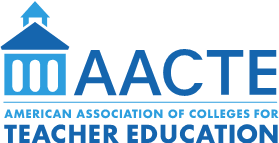 Enhancing Science Education Through Virtual Reality: A Conference to Design Simulations That Enhance the Clinical Preparation of Secondary Science Teachers
Enhancing Science Education Through Virtual Reality: A Conference to Design Simulations That Enhance the Clinical Preparation of Secondary Science Teachers
PI: Jacqueline Rodriguez
STEM Disciplines: Secondary science content areas including physical science, environmental science, biology, chemistry, earth science, and engineering
Grade(s): Our simulation scenarios are intended for any educator preparation program (post-secondary education) who are preparing secondary science teacher candidates for the field. The scenarios are based on secondary science (in some states 6-12, in other states 7-12).
Target Audience: Secondary science teacher candidates
Description: The simulation conference was an essential element of a strategy by the American Association of Colleges for Teacher Education (AACTE) and its collaborators to address the critical need for well-qualified science educators who can teach effectively in a variety of face-to-face and virtual school settings and who understand and can meet the learning needs of diverse students.
Methodology: AACTE established a protocol based on design thinking to support conference participants in identifying the most important gaps in secondary science teacher candidates’ experiences and ideated regarding environments and scenarios to reach consensus on the elements that should be prototyped in scenarios. Design thinking, which was developed at the Stanford University Design School, is an iterative process based on an empathetic, user-centered mindset that seeks to understand and deeply appreciate the needs and experience of end-users, in this case science teacher candidates (Dam & Siang, 2020).
Findings: Adoption of simulated learning environments in educator preparation increased throughout the pandemic likely due to the unique opportunity simulations present to supplement professional practice when schools were either closed or inaccessible to teacher candidates. With that being said, AACTE supports the use of simulation in the preparation of educator candidates as a supplement to high quality clinical experiences (e.g. student teaching) in schools, not to supplant these experiences. Simulations of varying types can offer science educator candidates, as well as in-service science educators, opportunities to practice and refine their teaching of NGSS, exercise professional decision making, refine their community and family engagement strategies, and develop as reflective, equity-centered science practitioners and leaders.
Key Challenge/Opportunity: As secondary students across the nation consider future careers, 40% identify an interest in STEM or a health profession (Hall & Rathbun, 2020). However, low-income students and students of color are under-represented in advanced high school science courses, in part because many attend schools that do not offer these courses or that have too few seats available (Patrick, Socol, & Morgan, 2020). This is due in large part to the significant shortage of well-qualified science teachers who are prepared to effectively educate students with diverse backgrounds and learning needs (U.S. Department of Education, 2020). Simulations can offer opportunities to introduce the science profession to secondary students, support the preparation of profession-ready candidates, and increase retention through engaging in-service practitioners in meaningful continuous improvement.
Product(s): The conference outcomes, including six field-tested scienarios addressing Next Generation Science Standards in specific science content areas (e.g. Biology, Physics, Chemistry, Earth Science, Technology) are available to educators and the public for use in their professional practice.
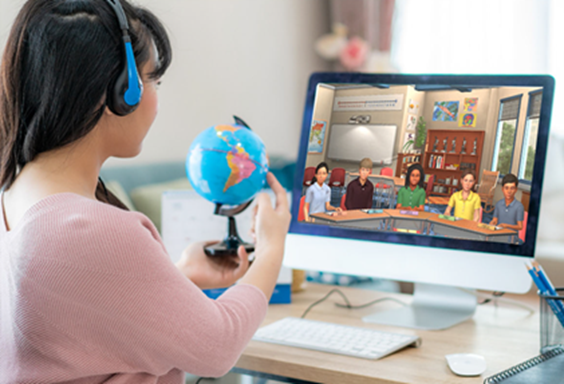 RAPID: Learning to Teach During COVID-19: Leveraging Simulated Classrooms as Practice-Based Spaces for Preservice Elementary Teachers Within Online Teacher Education Courses
RAPID: Learning to Teach During COVID-19: Leveraging Simulated Classrooms as Practice-Based Spaces for Preservice Elementary Teachers Within Online Teacher Education Courses
PI: Jamie Mikeska | Co-PI: Heather Howell
STEM Disciplines: Mathematics (fractions) and science (matter and its interactions)
Grade(s): 3-5
Target Audience: Preservice elementary teachers and mathematics and science elementary teacher educators
Description: In Spring 2020, the COVID-19 pandemic shuttered K-12 schools and universities across the nation, shutting down student teaching and other field placement/internship opportunities for prospective teachers. Unfortunately, this resulted in limited opportunities for preservice teachers to work closely with real life students and practice the interactive work of teaching. To address this gap, this one-year RAPID project examined how simulated teaching tasks developed in prior work (NSF grant #1621344) could be deployed online and fully remotely within teacher education courses to provide practice-based spaces for elementary preservice teachers to learn how to engage in the ambitious teaching practice of facilitating argumentation-focused discussions. The project’s overall goal was to develop a better understanding of the key design features important for simulation-based performance tasks and teacher educator support materials that make them viable approximations of practice in contexts where more traditional approximations such as in-class or in-school practice teaching are less available. Study findings help to advance the field’s knowledge of how to productively develop and deploy these simulation-based tools to develop preservice teachers’ instructional abilities within remote, online courses, which can inform ongoing and future teacher education and professional development efforts in mathematics and science.
Methodology: This usability study employed a set of background and task surveys – for both participating teacher educators and preservice teachers – and a focus group interview with the teacher educators to examine how these various stakeholders understood and used these simulation-based tools within the context of remote teacher education courses and the factors that supported and hindered their productive use. Primary analysis included qualitative analysis and descriptive statistics using the survey and interview data to discern key patterns and themes in their responses, including how the preservice teachers and teacher educators used the simulation-based tools, how they understood the tools’ purpose, and the various factors that supported or impeded their use of these tools.
Findings: Key findings from this study include:
- Teacher educators used different pedagogical activities to support teachers’ preparation and learning from simulated teaching. Teacher educators also drew upon varied pedagogical purposes when engaging preservice teachers in these pedagogical activities, which highlights substantive examples of the variation in productive teacher education use cases that are possible when using digital teaching simulations.
- The simulated teaching experience helped preservice teachers to: (a) recognize the importance of adequately and thoroughly preparing for facilitating these kinds of discussions with students, (b) learn about the importance of being flexible when preparing for and leading a discussion, and (c) learn about teaching moves they could use when facilitating high-quality, argumentation-focused discussions, such as ensuring all student voices are heard and ideas are valued and providing opportunities for students to engage in argument construction and critique.
- Participants valued the simulated teaching across varied content and site contexts, suggesting wide applicability.
- Participants cited many benefits of using simulated teaching including: provides a safe space to practice and build teaching skills where mistakes can be made without negative effects; can complement (or replace) field work/live classroom teaching experiences; can standardize the teaching experience, which supports evaluation and/or comparison of teaching skills; provides a window into preservice teachers’ instructional skills, which can inform next instructional steps; supports deeper reflection based on a record of practice; and helps to bridge the gap between methods courses and K-5 classroom work.
- The most frequently noted challenges to incorporating online simulations into these teacher education courses included the cost, finding time in an already full course syllabi, and addressing the technology demands on the preservice teachers. None of these challenges are design features of the simulation itself, and one interpretation of this data is that structural challenges to implementation are more prominent, at least under current conditions, than are challenges inherent to the design.
Key Challenge/Opportunity: Simulation use creates an opportunity for teacher educators to design intentional learning challenges for preservice teachers. This project highlighted one advantage of simulations – their relative resilience to disruption compared to school-based practice. But the larger affordance may be that simulations could be used to construct scaffolded learning trajectories for preservice teachers as systematic inclusions in teacher preparation programs by targeting specific competencies under controlled conditions. A pressing challenge identified by participants in our study is the expense of simulation use, suggesting that university-level commitments to ‘learning laboratories’ for preservice teachers might be needed to realize the potential of the approach.
Product(s): As part of this project, our team produced the following products:
- one webinar, one published book chapter, and one conference proceedings that detail how participating elementary teacher educators used the simulation-based tools within their online or hybrid elementary mathematics and science teacher education courses and the perceived pedagogical benefits from their use in these settings;
- two manuscripts (one accepted, one under review) highlighting preservice teachers’ and teacher educators’ perceptions about the affordances, benefits, and challenges of using simulation-based tools within teacher education;
- one manuscript (under review) noting the nature and purpose of the pedagogies used by teacher educators to help preservice teachers prepare for and learn from the simulated teaching experience;
- two teacher educator guidebooks – one to accompany the elementary mathematics Ordering Fractions performance task and another to accompany the elementary science Mystery Powder performance task – that provide substantive ideas for how teacher educators can help preservice teachers prepare for and learn from the simulated teaching experience;
- one conference presentation given at the 2021 annual meeting of the American Educational Research Association (AERA) highlighting the role and importance of standardization in simulated teaching experiences.
 Leveraging Simulations in Preservice Preparation to Improve Mathematics Teaching for Students with Disabilities (NSF #s 2009939, 2010298)
Leveraging Simulations in Preservice Preparation to Improve Mathematics Teaching for Students with Disabilities (NSF #s 2009939, 2010298)
PIs: Julie Cohen, Nathan Jones | Co-PIs: Robert Berry, Lynsey Gibbons, Vivian Wong
STEM Disciplines: Mathematics
Grade(s): Upper elementary
Target Audience: Preservice educators and teacher educators
Description: The focus of our project is on better preparing elementary candidates to support students with disabilities (SWDs) in mathematics lessons. General education teachers are likely to receive minimal coverage of special education teaching methods in their coursework and have few practice opportunities focused on SWDs. Our study aims to meet this challenge by integrating high-leverage practices for SWDs—and corresponding simulated practice — into elementary mathematics methods courses. Specifically, we are developing a suite of portable and scalable curricular materials, simulations, and coaching supports, which we will test in randomized control trials across several teacher education programs. A central part of our theory of change is that such low-stakes practice opportunities, when coupled with immediate, targeted feedback, will increase the likelihood that candidates are equipped to meet the needs of students with disabilities. If the materials prove to be effective, it could provide a model for integrating special education methods and content into general education courses in mathematics. Such efforts could pay dividends for teacher preparation programs looking to enhance candidates’ skills without adding additional coursework. Given the brief duration of teacher preparation and the high number of courses required for elementary licensure in most states, this approach could be helpful in developing a wide range of needed skills, and its portability raises exciting possibilities for scale.
Methodology: Following the development of our curricular materials, we will assess the impact of these resources on candidates’ knowledge, skills, and dispositions related to supporting students with disabilities in mathematics. Specifically, we will randomized control trial (RCT) across two large teacher preparation programs. Approximately 180 preservice candidates will be randomly assigned to either our treatment condition (the curricular modules coupled with simulations and coaching) or a control condition, wherein candidates gain access to readings related to supporting students with disabilities in mathematics but without the focus on practicing instruction and receiving feedback.
Key Challenge/Opportunity: One of the first steps in developing our curricular materials was in confronting long-standing differences among special education researchers and mathematics education researchers, who typically function as separate communities of practice. We devoted the first year of the project to consensus-building activities across the two fields, including interviews with leading researchers in special education and mathematics education, as well as a series of consensus-building panels with a handful of experts from both fields. This work has reinforced for us that when we do this kind of bridging work in teaching – bringing empirical findings from one field to another – it is essential to account for and confront gaps across fields. Otherwise, we run the risk of introducing instructional practices that do not align with candidates’ other training experiences, undermining the likelihood that these new practices get taken up in practice.
Products: Coming soon! We do not have any products that are ready for sharing. However, we will be presenting findings from this work at a Presidential Session at the 2022 Annual Meeting of the American Educational Research Association: Tue, April 26, 8:00 to 9:30am PDT (11am-12:30pm EDT), San Diego Convention Center, Floor: Upper Level, Ballroom 6E.
 Mathematical Learning via Architectural Design and Modeling Using E-Rebuild
Mathematical Learning via Architectural Design and Modeling Using E-Rebuild
PI: Russell Almond | Co-PIs: Kathleen Clark, Gordon Erlebacher, Valerie Shute
STEM Discipline: Mathematics
Grade(s): Middle school
Target Audience: Students
Description: This project studies the learning and teaching of mathematical problem solving through architectural tasks in an online simulation game, E-Rebuild. There is a need to connect mathematics to real world contexts and problems. In the game-based architectural simulation, students will be able to complete tasks such as building and constructing structures while using mathematics and problem solving. This learning platform enables teachers to customize tasks for their students. The project explores how students learn mathematical problem solving during architectural structure building in E-Rebuild and how the game-based learning platform can be included in middle school mathematics learning. The project also examines how to collect data about students' learning from the data generated as they play the game.
Methodology: The project uses a design-based research approach to gather data from students and teachers that will inform the design of the learning environment. The qualitative and quantitative data will also be used to understand what students are learning as they play the game and how teachers are interacting with their students.
Findings: The current study findings indicate a positive effect of using E-Rebuild in both in-class and after-school settings on the math problem-solving performance of middle school students. Student participants have portrayed a higher level of task engagement and performance with the data-drive, adaptive game-task navigation than the learner-controlled game-task navigation. Using in-game learning support features (math task planner and math historical story) is positively associated with the external math problem-solving test performance. The current study findings also support the validity and feasibility of using a Bayesian network model for real-time game-based learning assessment.
Product(s): The E-Rebuild game with tutorial and demo videos are available online.
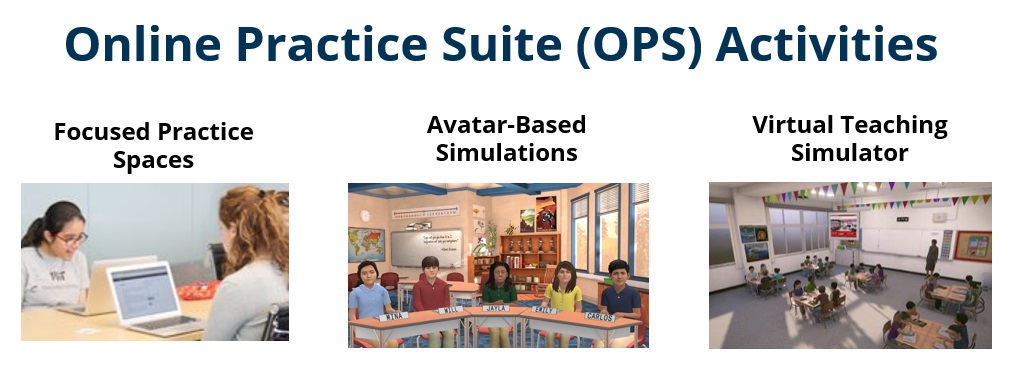 Online Practice Suite: Practice Spaces, Simulations and Virtual Reality Environments for Preservice Teachers to Learn to Facilitate Argumentation Discussions in Math and Science
Online Practice Suite: Practice Spaces, Simulations and Virtual Reality Environments for Preservice Teachers to Learn to Facilitate Argumentation Discussions in Math and Science
PI: Jamie Mikeska | Co-PIs: Heather Howell, Pamela Lottero-Perdue, Meredith Park Rogers, Justin Reich
STEM Disciplines: Mathematics (elementary level: fractions; secondary level: proportional reasoning) and science (elementary level: conservation of matter; secondary level: heat transfer)
Grade(s): 3-8
Target Audience: Preservice elementary and middle school teachers and mathematics and science elementary and secondary teacher educators
Description: Learning to teach demands that preservice teachers have robust, authentic, and consistent opportunities to engage in the work of teaching—ideally across different contexts, with diverse student populations, and for varied purposes. While traditional practice teaching opportunities in K-12 classrooms are critical to supporting preservice teachers’ learning, they provide few opportunities for preservice teachers to rehearse components of complex practice repeatedly and without adverse effects on real students. Our project is designed to directly address this challenge by developing a set of practice-based activities to support preservice teachers in one core teaching practice: facilitating argumentation-focused discussions. The practice-based activities include: (a) focused practice spaces to engage preservice teachers in eliciting and responding to students’ content-focused ideas and interactions, (b) performance-based tasks where preservice teachers practice facilitating discussions with five student avatars in a simulated classroom, and (c) a virtual reality environment that allows preservice teachers to become immersed in the classroom as an avatar and practice facilitating discussions that requires moving from small groups of student avatars to coordinating discussions between groups of student avatars. We are integrating the full online practice suite within elementary and secondary mathematics and science methods courses at multiple universities across the U.S.
Methodology: Our project uses a design-based research approach to develop, refine, and study the use of the practice-based activities and teacher educator guidebooks and support materials within elementary and secondary mathematics and science methods courses.
Findings: In 2021, we completed data collection for our pilot year, which provided us with feedback from teacher educators and preservice teachers that we incorporated across the online practice suite. Findings from our pilot study indicated that teacher educators used a range of strategies and approaches when integrating the online practice suite into their teacher education courses. Additionally, we have early evidence that the online practice suite provides preservice teachers with different and complementary opportunities to practice facilitating argumentation-focused discussions.
Key Challenge/Opportunity: Incorporating simulations into STEM teaching and learning provides a unique tool for teacher educators to use to enable preservice teachers to rehearse and reflect upon their engagement in ambitious teaching practices. Ideally, this would occur in concert with field-based experiences, with simulations being used to prepare preservice teachers for similar discussions with real students. Challenges of incorporating simulations into STEM teaching and learning include teacher education programs and preservice teachers having access to technologies that may not be available within all teacher education programs at this time.
Product(s): During the first 18 months of this project, our team has produced the following publicly available products:
- a pre-conference workshop shared at the 2021 National Association for Research in Science Teaching (NARST) conference introducing participants to a suite of three practice-based online simulations that can be used for synchronous and asynchronous integration within online and face-to-face elementary science education courses;
- one video that was presented as part of the 2021 STEM for All Video Showcase and described the three types of teaching simulations included in the project’s online practice suite and the project’s key goals and anticipated outcomes;
- a poster presented at the 2021 NSF DRK12 Principal Investigators meeting providing an overview of the online practice suite activities, the project’s research design, the main project phases, and the project’s anticipated impact;
- proceedings from the 2021 North American Chapter of the International Group for the Psychology of Mathematics Education (PME-NA) conference examining transitions in elementary preservice teachers’ understanding of, and skills in, leading argumentation-focused discussions in mathematics during participation in three different practice-based online simulations;
- an exploratory session as part of the 2022 Association for Science Teacher Education (ASTE) conference to share innovative activities from four of our participating science teacher educators that were used with preservice teachers to prepare them for facilitating and/or reflecting on their teaching of argumentation-based discussions with one or more of the online practice suite teaching simulations;
- a manuscript (under review) examining secondary preservice teachers’ perceptions and engagement with a science performance task—used within an online, simulated classroom consisting of five middle school student avatars—to practice facilitating an argumentation-focused science discussion;
- a paper presented at the 2022 National Association for Research in Science Teaching (NARST) conference exploring elementary preservice teachers’ abilities to notice argument construction and critique in the context of two online practice spaces designed to provide them with opportunities to build their knowledge and skills for facilitating argumentation discussions;
- proceedings from the 2022 Society for Information Technology and Teacher Education (SITE) conference examining four elementary teacher educators’ perceptions about using these practice-based activities within their elementary mathematics or science methods course; and
- a project website providing information about the project’s purpose, the teaching simulations in the online practice suite, project staff and roles, and presentations and publications.
Additional Projects
We invite you to explore a sample of the other recently awarded and active work that focuses on simulations in the DRK-12 portfolio.
- Facilitating Formative Feedback: Using Simulations to Impact the Capability of Novice Mathematics Teachers (PI: Meghan Shaughnessy)
- Fostering Computational Thinking Through Neural Engineering Activities in High School Biology Classes (PI: Ido Davidesco)
- Generalized Embodied Modeling to support Science through Technology Enhanced Play (PIs: Joshua Danish, Noel Enyedy)
- Geological Construction of Rock Arrangements from Tectonics: Systems Modeling Across Scales (PI: Amy Pallant)
- Highly Adaptive Science Simulations for Accessible STEM Education (PI: Emily Moore)
- CAREER: Making Science Visible: Using Visualization Technology to Support Linguistically Diverse Middle School Students' Learning in Physical and Life Sciences (PI: Kihyun Ryoo)
- SimSnap: Orchestrating Collaborative Learning in Biology through Reconfigurable Simulations (PIs: Sadhana Puntambekar, Michael Tissenbaum)
- SmartCAD: Guiding Engineering Design with Science Simulations (PI: Charles Xie)
- Sonified Interactive Simulations for Accessible Middle School STEM (PI: Emily Moore)
- Supporting High School Students and Teachers with a Digital, Localizable, Climate Education Experience (PI: Lindsey Mohan)
- Supporting Teachers in Responsive Instruction for Developing Expertise in Science (PIs: Marcia Linn, Brian Riordan)
Related Resources
Related Spotlights
- Analyzing & Interpreting Data Across STEM Disciplines
- Conferences & Workshops Organized by DRK-12 Projects
- Modeling in Science & Mathematics Education
- Supporting Students with Disabilities
- Teacher Preparation Models & Programs
Other NSF Resource Networks
- Integrating Emerging Technologies into Teaching Practice (STEM for All Multiplex)